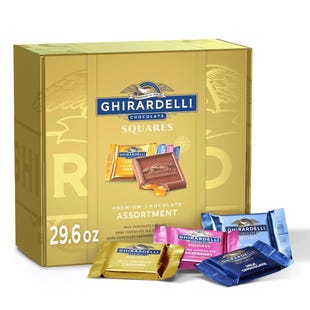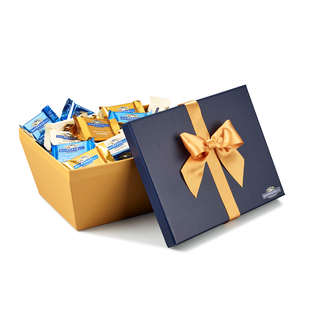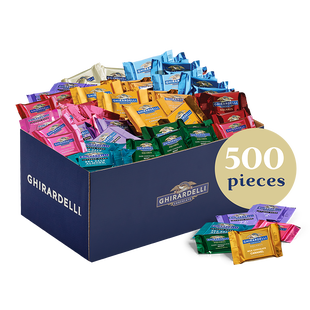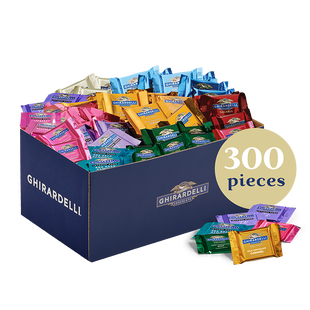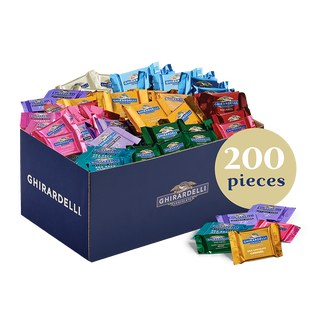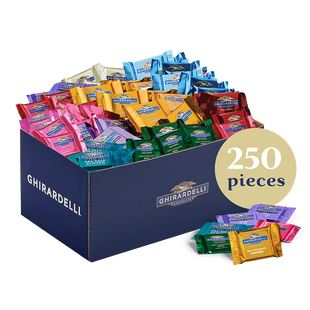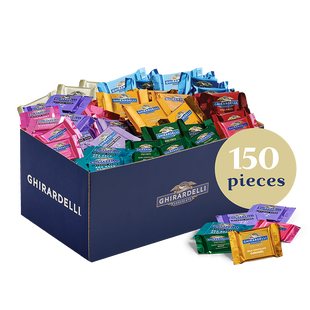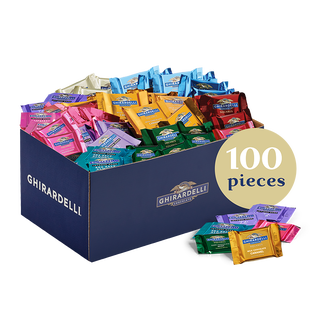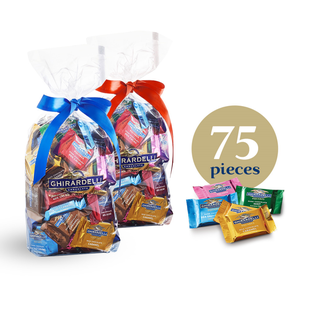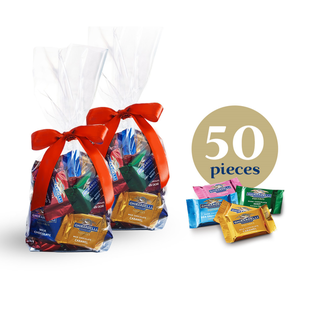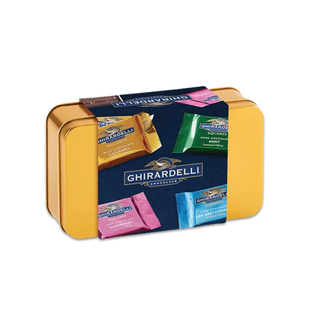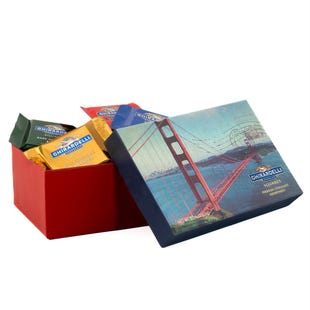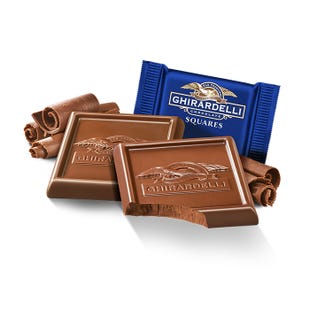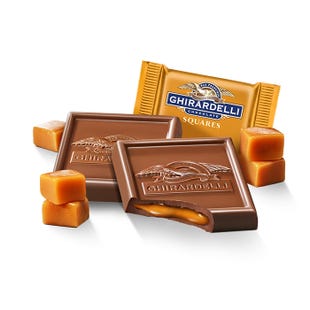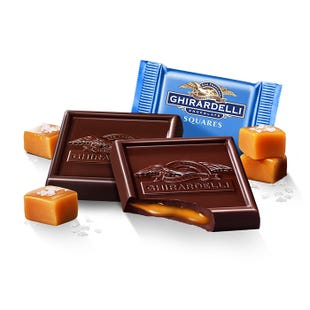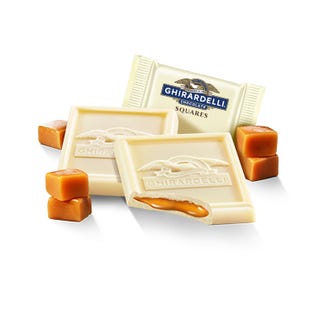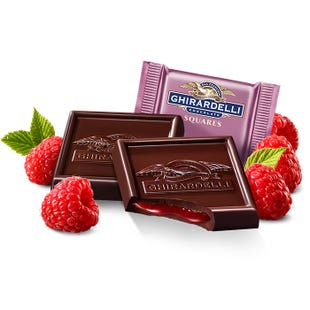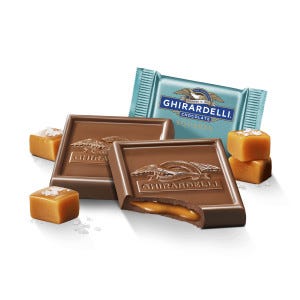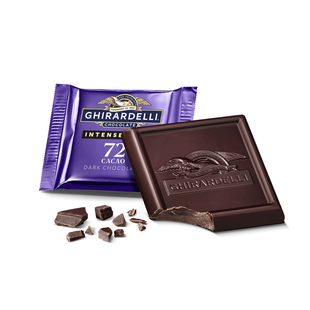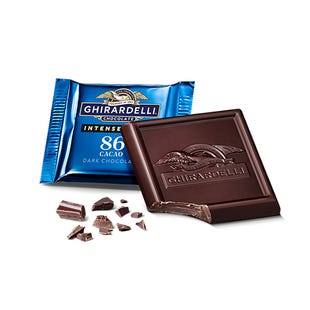Tasting Chocolate
For a chocolate lover, the art of tasting has the power to magically transform a casual nibble into a world of new pleasure.
Like wine experts, professional chocolate makers and connoisseurs use a simple but systematic procedure to unlock all the nuances in a bite of chocolate.
With a few tips and tricks, you can learn to taste chocolate like a pro—just by slowing down, savoring, and focusing your attention on taste and texture. You’ll be amazed at what you discover.
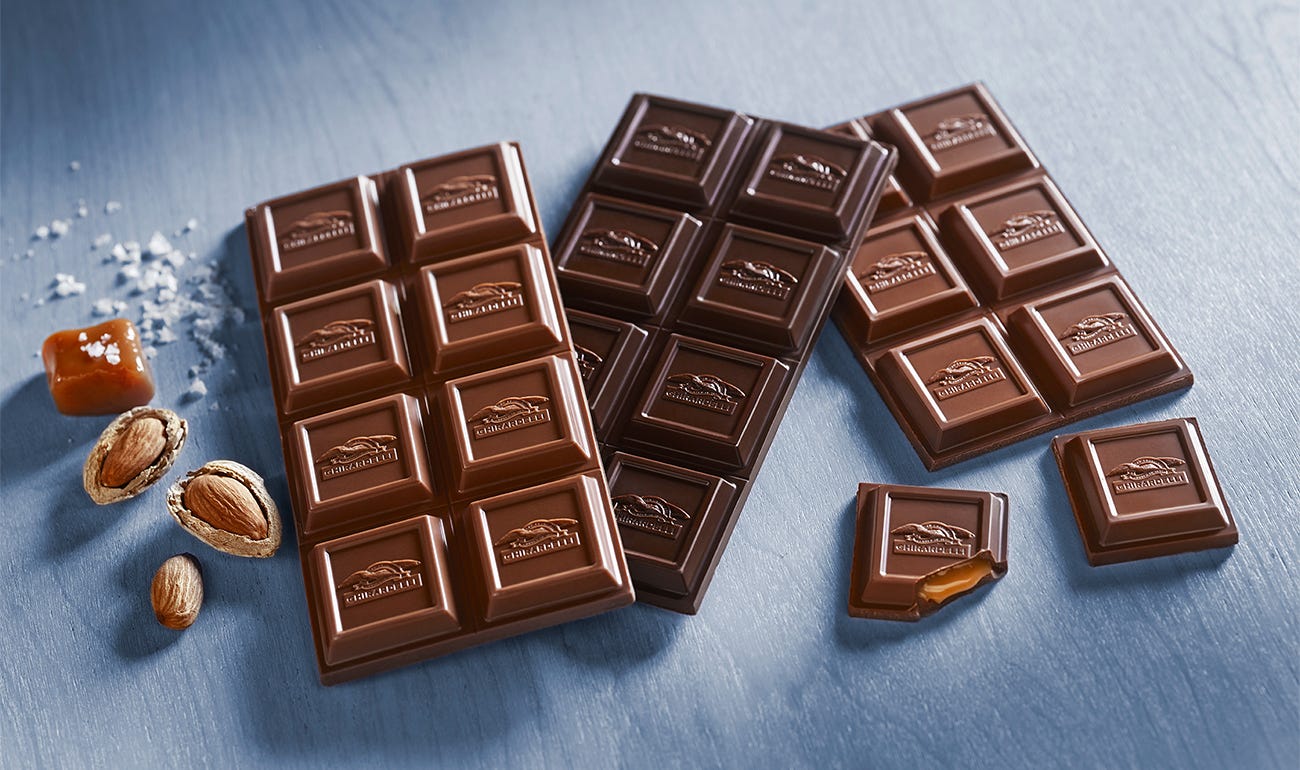

How To Taste And Appreciate Chocolate
A journey of culinary discovery chocolate's deep complexity.
While our guidelines may enhance your experience, there's no "right, or wrong" way to taste chocolate. Remember, the best chocolate is the one you like the most. No two people perceive aroma or taste flavors exactly the same way, and even texture can differ from one palate to another. Your individual chocolate palate evolves and sharpens over time with experience. When tasting, look for, notice, and describe what pleases you in the chocolates you taste as well as what you find less appealing about a specific chocolate.
Read on for expert insight on setting off on a journey of culinary discovery.

How To Get Started
Decide on a Focus
Professional tasters usually taste one type of chocolate at a time, focusing on milk chocolate, bittersweet chocolate, or white chocolate, ideally tasting no more than six samples at one sitting. Feel free to set your own rules, and focus on chocolates from a single manufacturer, or from several, tasting across different types of chocolate, or from one type at a time.
Set the Scene
Create a pleasant space for tasting without too many sensory distractions. Limit noise, bright lights, and strong scents so that your senses are filled with the aromas, flavor nuances, and varied textures in the chocolate you taste. Break or cut the chocolate into small pieces for sampling, offer water and unflavored crackers for palate cleansing, and provide paper and pens or pencils to make notes.
What To Notice
Use All Your Senses
What color is the chocolate? Is it glossy, matte, dark, light? Bring the chocolate up to your nose and inhale deeply. What aromas do you pick up? Break the piece of chocolate in half. Does it snap? How does the chocolate feel as it melts on your tongue—creamy, velvety, or chalky? Finally, how does it taste?

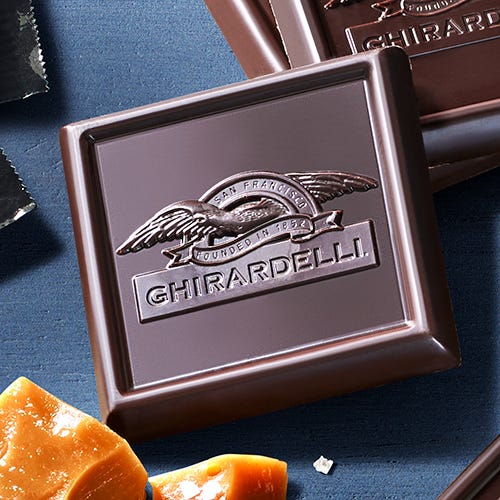

Look
We eat with our eyes. Appearance is part of the initial pleasure and attraction of chocolate, but not itself a measure of quality. The color of chocolate varies. It may be ivory, golden, shades of copper brown, deep reddish, or charcoal brown depending on the type of chocolate, the percentage of cacao in the chocolate, the presence and quantity of milk or cream, and the source of the beans from which the chocolate was made.
An attractive gloss on the surface of chocolate with a tight, fine grain and even-colored showing at cut or broken edges indicates that the chocolate was well-tempered, and properly cooled and stored. Scuffed or scraped samples are not necessarily of poor quality, but they are less pleasing to the eye.
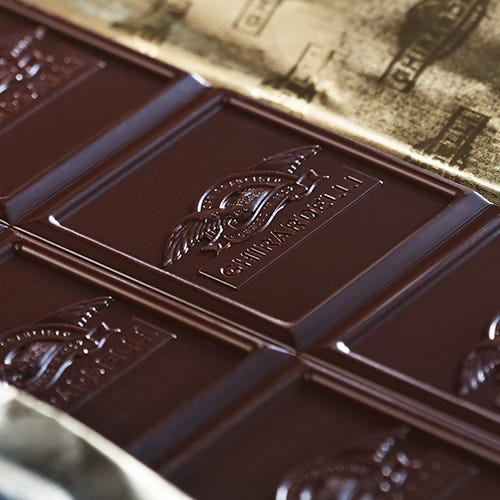

Smell
Aroma
As with wine, some of the first clues to flavor are in the nose. Before even tasting, rub the piece of chocolate with your thumb to warm and release its aroma. Hold the chocolate to your nose in cupped hands, like a brandy snifter, to capture and hold the aroma close. Sniff or draw slow breaths. At first chocolate may simply smell “chocolaty.” But as you compare one piece with another you will notice general differences in richness, intensity, sweetness and earthiness. You'll pick up on lower notes and higher notes. The aroma of some chocolates is faint, while that of others is intense. You may then detect even more specific differences.
Milk chocolates often give off aromas of milk or cream, or caramel or malt. Dark chocolate aromas may be characterized by toasted nuts, roasted coffee, dried fruit or wine. Some chocolates have floral or fruity qualities; others smell more roasted or nutty. As with flavor, each chocolate brand has a signature aroma. This comes from the blend or selection of beans and their quality, as well as the manufacturer's roasting and conching methods. There is no end to the specific notes that you can pick up with practice and no limit to the words that you may use to describe them.
Seriously accomplished tasters are adept at drawing from their own experience and memory, choosing words accordingly to describe what they smell and taste. Practice!
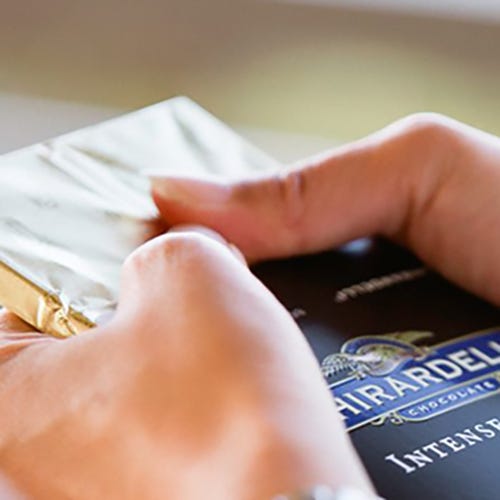

Snap It
Texture
Texture is enormously important to the chocolate experience. A smooth and creamy melt-in-your-mouth texture is so seductive, that many people are more influenced by texture than by flavor.
Begin by listening for the snap! It's the first clue to texture. Snap is the feel and sound of a piece of chocolate when you first break it or bite into it. Snap is easier to appreciate in a thin bar than a thick chunk of chocolate. Snap is a function of the amount and quality of the cocoa butter in the chocolate, how finely ground the chocolate particles are, and how well the chocolate was tempered.
White and milk chocolate bars have a gentler snap than dark or semi-sweet chocolate because their milk and butter fat content make them naturally softer
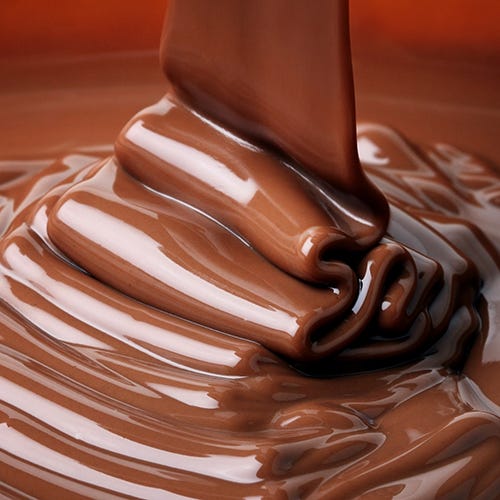

Savor the Melt
Mouthfeel is another word for texture. After looking, smelling, and snapping, place the chocolate in your mouth. But, resist the urge to chew and eat. Instead, hold the chocolate against the roof of your mouth and pass your tongue over the bottom of it, noticing first how it melts and then how it feels. Does it melt readily and feel smooth and creamy, or greasy and slimy? Maybe it resists melting and seems hard or waxy? Does it feel grainy or gritty, powdery, harsh, or drying?
No two palates have the same perception of these textures...it is even possible for the same piece of chocolate to seem smooth and silky to one taster and dry and powdery to the next!
If the piece of chocolate has melted completely, take another piece so that you can now notice how the chocolate feels to chew. Is it gummy, sticky, cake-like, fudgy, fast-dissolving, etc.?
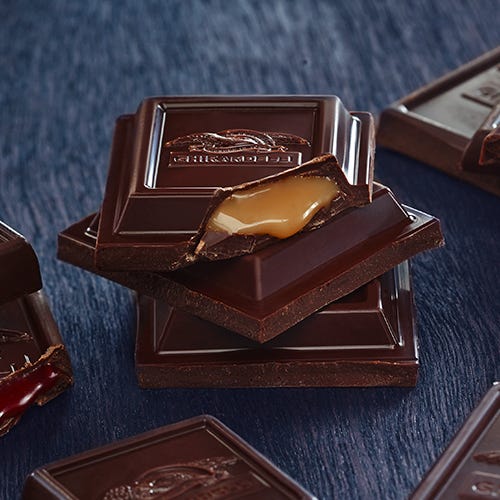

Taste
Flavor
Flavor is the ultimate criterion for quality in chocolate. Because texture is so distracting some tasters focus on flavor first, before considering texture. Either way, flavor begins to fill your mouth from the moment the chocolate begins to melt on your tongue.
At first there is so much pleasure in tasting the chocolate, it may be difficult to focus on the specifics of flavor. As with aroma, your first perception may be simply described as “chocolaty” or even just “yummy”! As you begin to focus, notice several things:
Does the flavor come on quickly or slowly?
Does the flavor build and peak or remain constant?
Does the flavor change character from the beginning to the middle to the end?
How long does the flavor last in your mouth? Professional chocolate tasters often look for a “long finish.” This is simply flavor that lasts a long time in your mouth.
Describing flavor is the most fun and most challenging aspect of chocolate tasting. Everyone gets better with practice.


